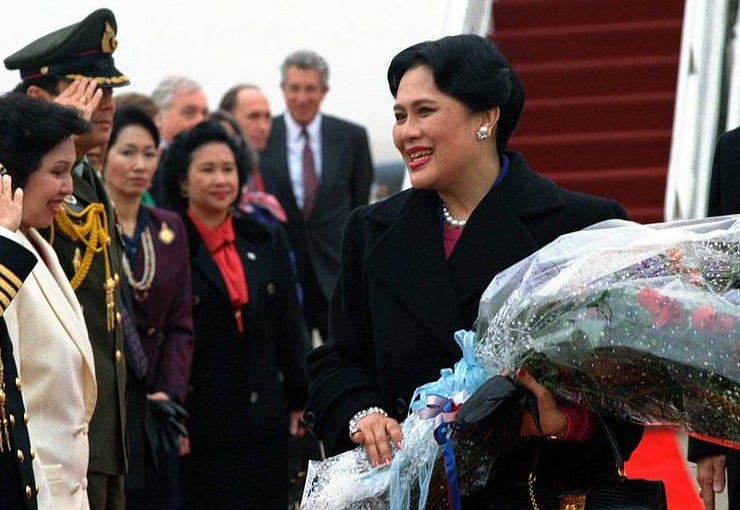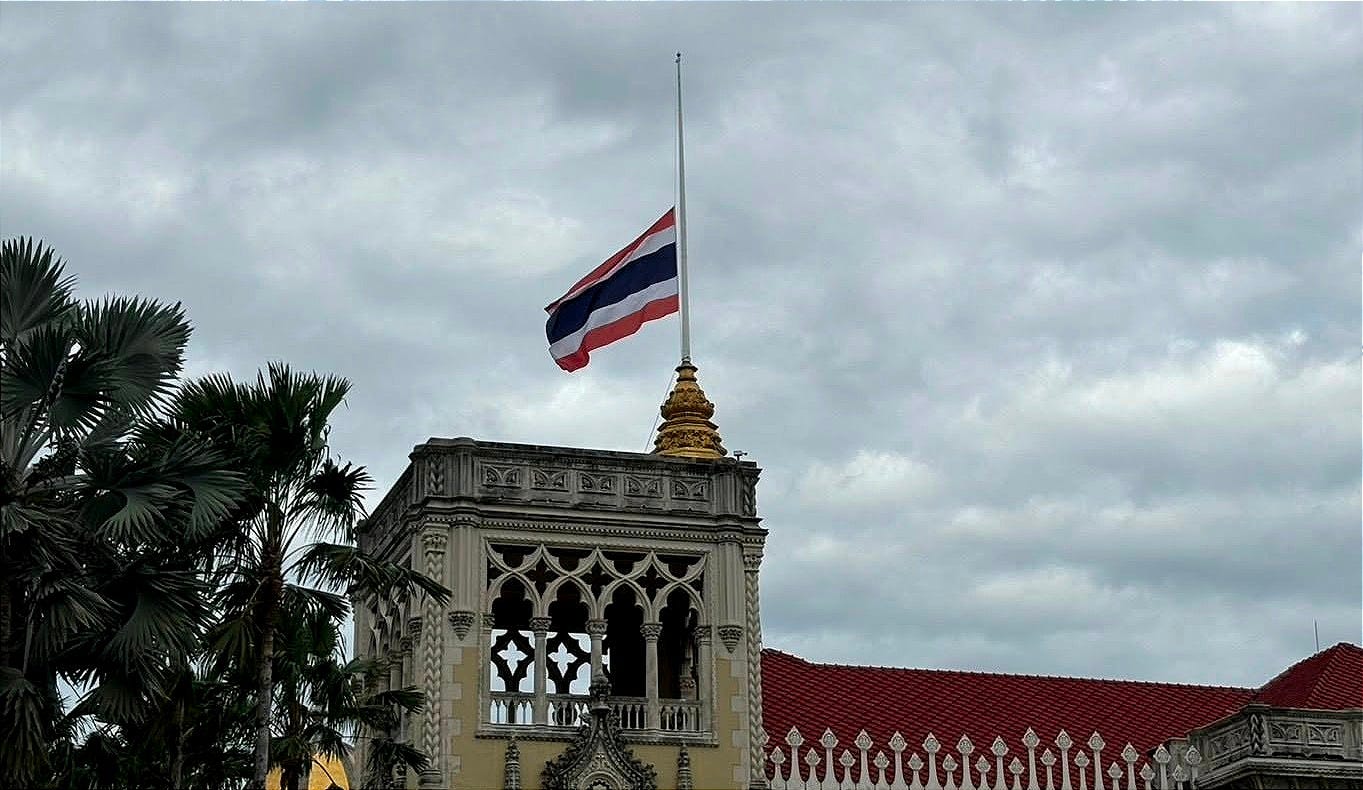🇹🇭 Thailand mourns Queen Mother Sirikit: A nation reflects on grace and legacy
One-year mourning declared as Thais bid farewell to their beloved matriarch

The passing of Queen Mother Sirikit on October 24 marks more than the end of an era for Thailand, it closes a chapter in Southeast Asia’s post-war history. As one of the region’s longest-surviving royal figures, Sirikit’s life intertwined with the making of modern ASEAN, from Cold War realignments to today’s soft power diplomacy.
“To give, not to take, only to give; to love, so that is the reason my husband and I can work, year after year, day after day.” - Queen Sirikit of Thailand.
Her words capture a lifelong philosophy of service and compassion — values that shaped her approach to cultural diplomacy, rural development, and women’s empowerment. Through this legacy, Sirikit transformed royal duty into a form of soft power that still resonates across Southeast Asia today.
🎯 The Main Takeaway
✅ Queen Mother Sirikit, Thailand’s most revered matriarch and widow of the late King Bhumibol Adulyadej (Rama IX), passed away at 93 at King Chulalongkorn Memorial Hospital in Bangkok.
💬 The Royal Household Bureau said her health had been closely monitored since 2019 due to multiple complications. Despite intensive treatment, she succumbed to a blood infection.
✅ King Maha Vajiralongkorn has declared a full year of national mourning, marking one of Thailand’s most solemn royal moments since King Bhumibol’s death in 2016.
👑 Legacy & Lifework
✅ Sirikit’s public life spanned over seven decades, first as Queen Consort, later as Queen Regent, and finally as Queen Mother.
✅ She became a symbol of Thai identity, women’s empowerment, cultural preservation, rural development and cultural heritage.
✅ Her birthday, August 12, was designated Thailand’s National Mother’s Day, reflecting her deep emotional bond with the Thai people.
✅ Her landmark initiative, the SUPPORT Foundation (1976), preserved traditional crafts, revived rural economies, and brought global attention to Thai silk — a textile she famously championed as both fashion and diplomacy.

🔎 Why It’s on Our Radar
🇹🇭 National unity and reverence, Queen Sirikit, known as “Mother of the Thai Nation,” played a crucial role in bridging monarchy and the public during Thailand’s decades of political turbulence.
🌸 Cultural diplomacy, a patron of Thai arts and crafts, she elevated Thailand’s soft power through traditional silk and rural development projects that became international cultural touchstones.
🕊️ End of an era. Her death symbolically closes a royal chapter spanning the Cold War to Thailand’s 21st-century transformation.

🌏 The Regional Lens
🤝 For neighbouring countries, Sirikit’s model of “royal patronage meets sustainable development” provides a template: it shows how cultural assets, community empowerment and national brand can be integrated.
🌺 Cultural legacy, Queen Sirikit’s advocacy for women’s education and preservation of Southeast Asian textile heritage continues to inspire cross-border collaborations in cultural preservation and social enterprise.
🌺 Soft Power Visibility, her persona as a style icon (sometimes likened to “Asia’s Jackie Kennedy”) gave Thai soft-power a visible face and global appeal.
🌏 Monarchies in Modern ASEAN, her passing highlights how royal institutions can sustain relevance through soft power, civic engagement, and heritage promotion, even amid rapid political and economic change.
⚖️ What’s at Stake
💔 National identity and continuity, the mourning period underscores how the monarchy remains a cornerstone of Thai cultural life amid generational change.
📷 Public sentiment, large crowds are expected at Dusit Maha Prasat Throne Hall, where her body lies in state, echoing the massive turnout during King Bhumibol’s five-day funeral in 2017.
🏛️ Political temperature, the event may temper public discourse and street activism, as Thais unite in collective remembrance.
🕊️ The Big Picture
✅ Royal lineage. Born to a noble diplomatic family, Sirikit met King Bhumibol in Switzerland in 1948. They married in 1950, a week before his coronation.
🎶 Modern grace. Fluent in French and English, she represented Thailand internationally and was known for her elegance and patronage of music and arts.
💬 During decades of political coups, she remained a unifying figure, appointed Queen Regent during Bhumibol’s absences, symbolizing the monarchy’s stabilizing presence.
❤️ A personal bond. For many Thais, Sirikit embodied compassion and maternal strength. Even after suffering a stroke in 2012, she continued to make rare but meaningful public appearances.

📸 Beyond the Headlines
📍 Place of rest: Dusit Maha Prasat Hall, Grand Palace, Bangkok.
📅 Mourning period: October 2025–October 2026.
🌺 Royal funeral: Full state ceremony with Buddhist rites expected in late 2026.
🎖️ Title: “Somdet Phra Nang Chao Sirikit Phra Borommarachininat,” Queen Mother of Thailand.
🌐 Regional response: Condolences poured in from ASEAN leaders and beyond, highlighting her legacy as both cultural envoy and symbol of Thai grace.
💮In Memoriam
Her passing reminds Thailand, and Southeast Asia of a generation where monarchy, tradition, and nationhood intertwined. A matriarch’s grace now turns to memory, but her imprint endures in every silk thread and song she championed.
Need More Angles?
Thai PBS The diplomatic threads: How Queen Sirikit wove Thai culture on the world stage
Times of India Travel in Thailand during the year-long mourning period for Queen Sirikit: Key updates, etiquette tips, and dos and don’ts
(ZAA/ELS)




